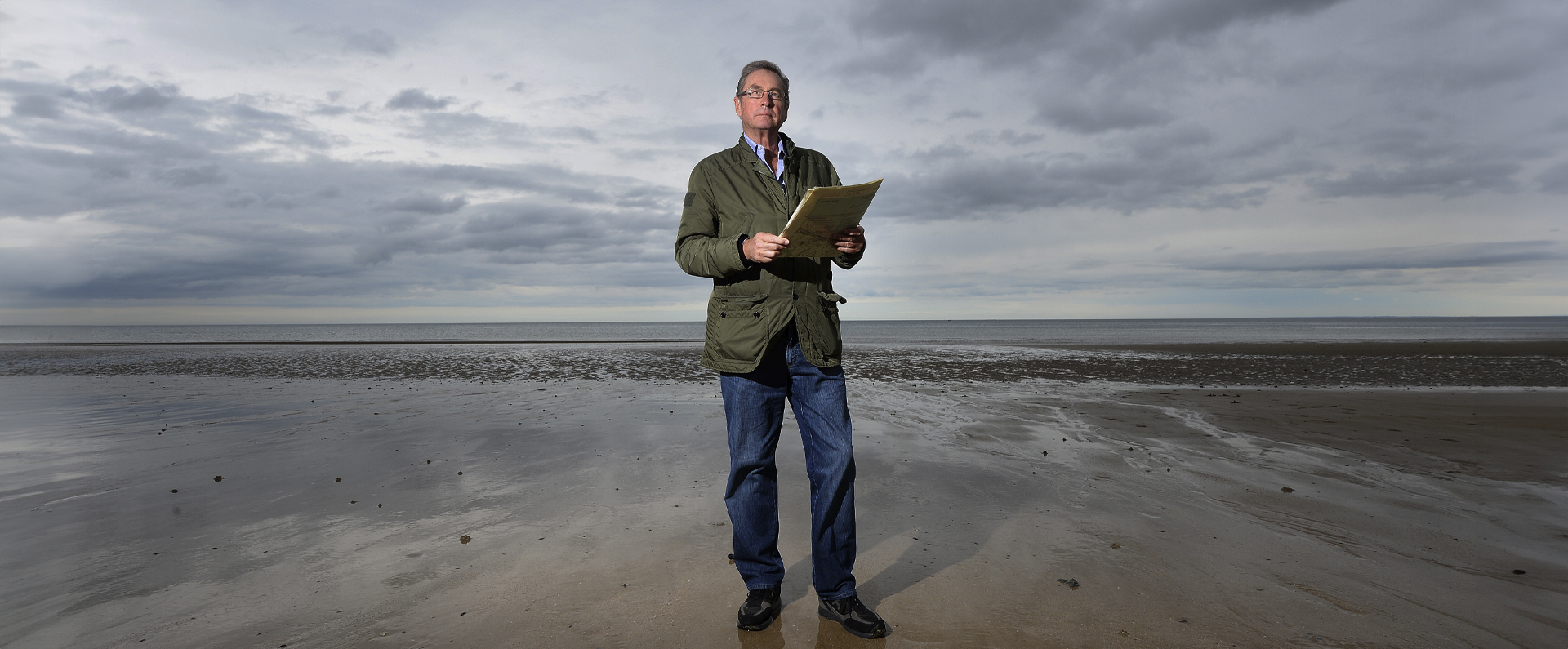
Yesterday I, along with members of the media, had the opportunity to see for the first time something in which I am inordinately proud to have played a part.
For those of us present were given a preview of the memorial to the members of Bomber Command, a long-overdue testament to heroism.
The memorial, once it is completed, will be unveiled by a senior member of the Royal Family next month when nothing will prevent me from being present. Yesterday I was excited by the fact that I had the opportunity to view the elegant stonework of the memorial, which has been constructed in Green Park, alongside Piccadilly.
Substantial donations from John Caudwell, a fellow entrepreneur, and myself have enabled the project to be constructed to a faster timetable than was originally envisaged. I made a £1 million commitment almost three years ago to ensure that the project would be completed because I want to help right a wrong.
Rarely, if ever, can any group of servicemen have been more deserving of a memorial to their courage and self-sacrifice than Bomber Command. The new monument will be a fitting tribute to men who helped to shape the world we live in but whose bravery, until now, has not been properly recognised.
Bomber Command consisted of some 125,000 volunteers from Britain, the Commonwealth and Allied countries who had to endure some of the most terrifying combat conditions of the Second World War. Indeed, Bomber Command was the only British fighting force that took the war directly to Germany, destroying vital infrastructure and supply lines – but at a very heavy price.
The average age of the aircrew was just 22 and the youngest were only 18. Three out of every five airmen became casualties and the more detailed statistics tell their own story: 55,573 men were killed, 8,403 were wounded and 9,838 were captured and held as Prisoners of War.
The losses of Bomber Command were greater than those of any other service – accounting for 10 per cent of all British fatalities – yet, perversely, its members have been the only Second World War servicemen not to have been publicly honoured by their country.
During the war, no less than 19 Victoria Crosses were awarded to men of Bomber Command and the recipients of the world-famous gallantry award included Wing Commander Guy Gibson, of 617 Squadron and ‘Dambusters’ fame.
However, to illustrate the incredible courage of the aircrew from Bomber Command, I will refer to a single act of bravery by a far less well-known airman: Sergeant Norman Jackson. Jackson’s bravery will feature prominently in my new book on gallantry, Heroes of the Skies, which will be published by Headline in September.
During the night of 26 April 1944, Jackson, a flight engineer, was returning from a bombing raid over Germany when his Lancaster aircraft was attacked by an enemy fighter plane.
When a fire broke out on the starboard wing, Jackson did not hesitate to act even though the Lancaster was flying at 200 mph and at 20,000 feet, and he had been wounded when the aircraft was hit.
After clipping on his parachute and tucking a hand-held fire extinguisher into his life-jacket, he climbed out of the cockpit and back along the fuselage. However, before his precarious mission had hardly begun, his parachute pack opened and the canopy and rigging lines spilled into the cockpit.
By the time he had managed to clamber further along the fuselage in the bitter cold, the fire had spread and he slipped, losing his fire extinguisher into the night. His face, hands and clothing were now badly burnt and, to make matters worse, he was then dragged through the flames and over the edge of the wing. When he was last seen by his fellow aircrew, he was hurtling towards the ground with his parachute ablaze and only partly open.
Jackson eventually landed heavily, breaking his ankle. By now severely burnt and with his hands useless, he was paraded through a German town after being taken Prisoner of War. Jackson’s VC was announced the following year and, after the hostilities ended, he received his award from George VI.
This wonderful man eventually died in March 1994, aged 74. A decade later, I bought his VC at auction and his gallantry and service medals are now on display at the Lord Ashcroft Gallery in the Imperial War Museum.
It is because of the bravery of Norman Jackson and others like him that I felt so strongly that we could not wait any longer for a Bomber Command Memorial to be built. The surviving aircrew are now in their 80s and 90s and as Prince William noted two years ago: “It is vital, therefore, that this memorial be erected now, while they are still alive and able to appreciate our nation’s gratitude to them, and to their fallen comrades.”
I am grateful to all those who have donated towards the cost of the memorial. The Bomber Command Association and its supporters could not have done more to raise the profile of the fund-raising campaign.
As a champion of bravery, I am about to have my fourth book on gallantry published. Furthermore, I have built up the world’s largest collection of VCs, now totalling more than 170s decorations. However, few actions or charitable donations have given me as much pleasures as my contribution towards the Bomber Command Memorial.
Among the various statistics that relate to the aircrews, one particular fact upset me greatly: half of the casualties from Bomber Command have no known grave. Now, at last, the final touches are being made to a fitting memorial to those aircrews that deserve their place in history among the bravest of the brave.



